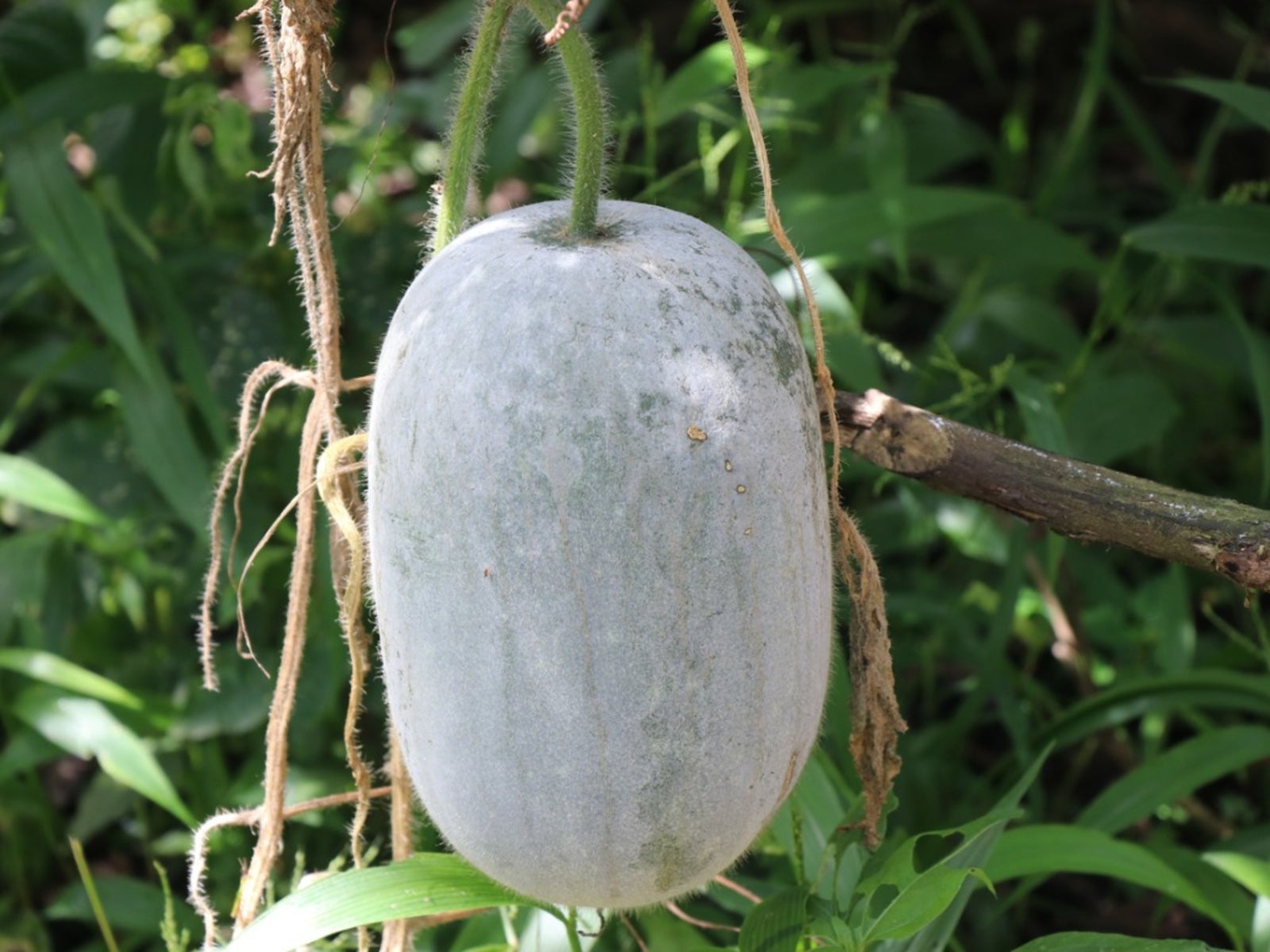What Is A Winter Melon: Winter Melon Wax Gourd Info

The Chinese winter melon, or winter melon wax gourd, is a primarily Asian vegetable known by a plethora of other names including: white gourd, white pumpkin, tallow gourd, ash gourd, gourd melon, Chinese watermelon, Chinese preserving melon, Benincasa, Hispida, Doan Gwa, Dong Gwa, Lauki, Petha, Sufed Kaddu, Togan, and Fak. Literally, there is a different name for this vegetable for each culture that grows and harvests Chinese winter melon. With so many names, what really is a winter melon?
What is a Winter Melon?
Growing winter melons can be found throughout Asia and on oriental vegetable farms in south Florida and similarly climactic areas of the United States. A member of the cucurbit family, winter melon wax gourd (Benincasa hispida) is a variety of musk melon, and one of the largest fruit/vegetables grown-- attaining a foot long (30.5 cm.) or more, 8 inches (20.5 cm.) thick and weighing up to 40 pounds (18 kg.), although 100 pound (45.5 kg.) specimens have been grown. Resembling a watermelon when mature, the sweet edible flesh of winter melon wax gourd is born off of a large, soft, hairy vine with an outer skin that is thin, medium green yet hard and waxy, hence the name. The flesh of the melon is thick, firm, and white in appearance with a large number of small seeds and tastes a bit like a zucchini squash. The melon can be kept for long periods of time, from six to twelve months when mature and stored in a cool, dry area.
Winter Melon Care
Winter melon requires a long growing season and ripens in late autumn. Due to its size, winter melon is not trellised but is usually allowed to spread over the ground. Akin to most other cucurbits, it is susceptible to spider mites, aphids, nematodes, and viruses. You may directly sow the seeds in a sunny location of the garden when the soil has warmed to over 60 degrees F. (15 C.). Or they can be germinated in individual peat pots or seed flats after abrading the seed covering slightly, keeping the soil moist until the plant has sprouted. Transplant into the garden after five to six leaves have appeared.
What to Do with Winter Melon
With so many cuisines availing themselves of winter melon, the number of uses is almost unlimited. The mild flavor of this vegetable/fruit is often incorporated in chicken soups and stir fries with pork, onions, and mizuna. The skin of winter melon is often made into sweet pickles or preserves. In Japan, the young fruit is eaten as a condiment with seafood, lightly steamed, and seasoned with soy sauce. In India and part of Africa, the melon is eaten when young and tender, sliced thinly or chopped atop rice and vegetable curry. The Chinese have been eating winter melon for centuries and their most lauded dish is a soup called “dong gwa jong” or winter melon pond. Here, the rich broth is cooked inside the melon along with meat and veggies. Outside, the skin is elaborately etched with auspicious symbols such as the dragon or the phoenix.
Gardening tips, videos, info and more delivered right to your inbox!
Sign up for the Gardening Know How newsletter today and receive a free copy of our e-book "How to Grow Delicious Tomatoes".

Amy Grant has been gardening for 30 years and writing for 15. A professional chef and caterer, Amy's area of expertise is culinary gardening.
-
 Looking For Plants To Give You The Soft And Fuzzies? Try These 5 Fuzzy Leaf Plant Options
Looking For Plants To Give You The Soft And Fuzzies? Try These 5 Fuzzy Leaf Plant OptionsLovers of texture, drama, silver foliage and tactile plants will adore these special sensory garden additions. These fuzzy leaf plant options will leave you all aglow
By Susan Albert
-
 Get Ready For A Summer Of Hummers! Grow These Full Sun Hummingbird Plants and Flowers
Get Ready For A Summer Of Hummers! Grow These Full Sun Hummingbird Plants and FlowersIf you’re lucky enough to enjoy a sunny backyard, make sure you are maxing out on your pollinator opportunities and grow these full sun hummingbird plants and flowers
By Tonya Barnett